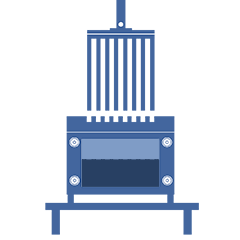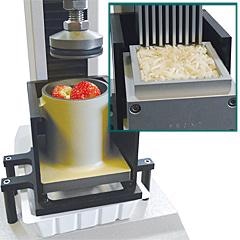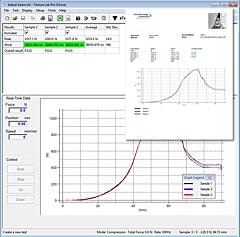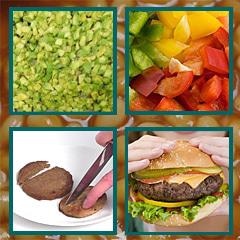When it is not practical or representative to test an individual sample as a whole or component piece, the sample is tested “in bulk” using a bulk analysis method. Particulate products, such as reconstituted meat, or foodstuffs consisting of small elements in an individual serving or mouthful, such as beans or rice, are investigated by this method.
The procedure applies compression, extrusion, and shear - often in combination - producing high forces. Kramer shear cell is the most widely used fixture.

Test Procedures
The procedure involves the use of a lower accessory to hold the bulk product and an upper component blade or plunger moving downward to shear and/or compress. The deformed sample extrudes either forward through the bottom of the container cell, or backward around the upper accessory.
The peak compressive force is a vital measurement and the data is an average for the overall texture. The shear cell application is very illustrative of the mouthfeel, by accurately recreating the biting and chewing of food.




This information has been sourced, reviewed and adapted from materials provided by Mecmesin.
For more information on this source, please visit Mecmesin.